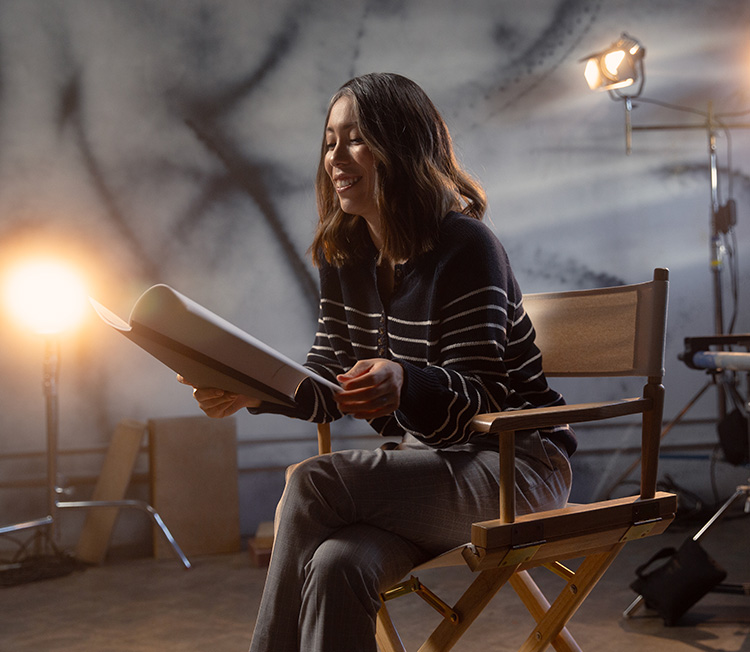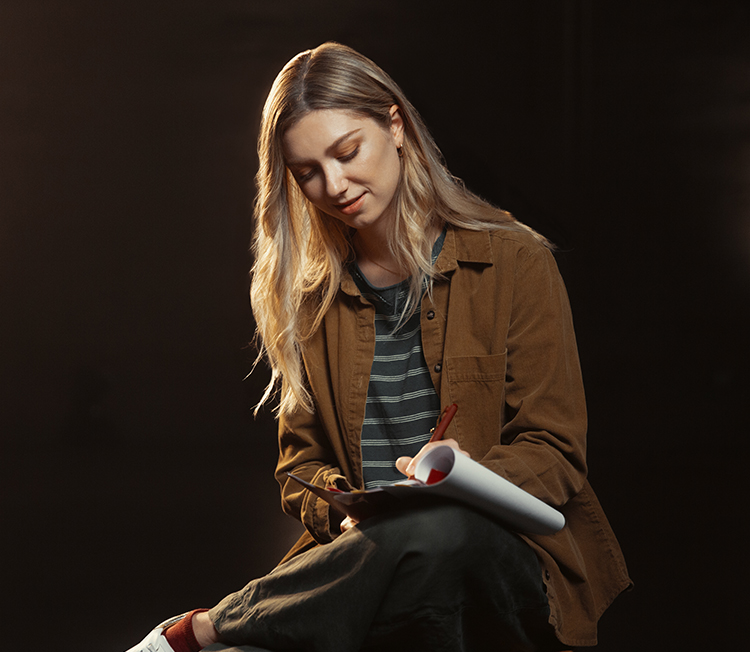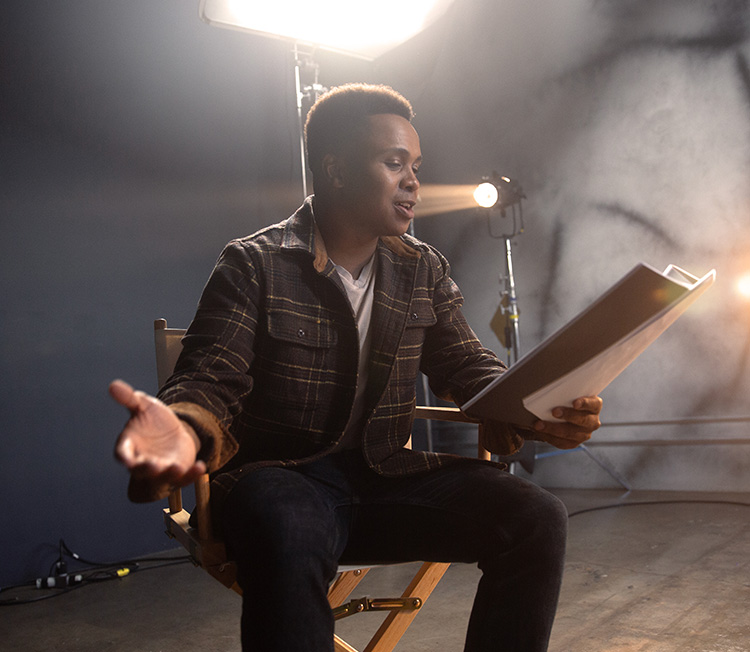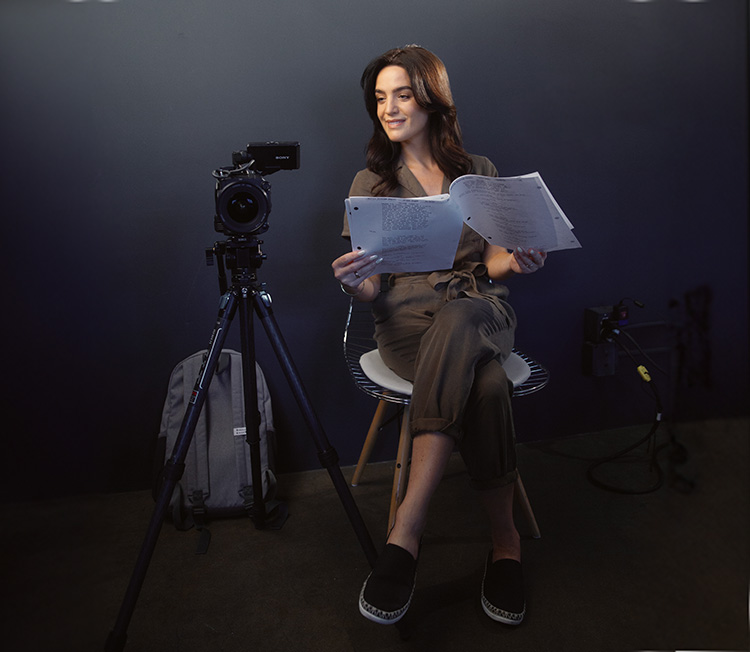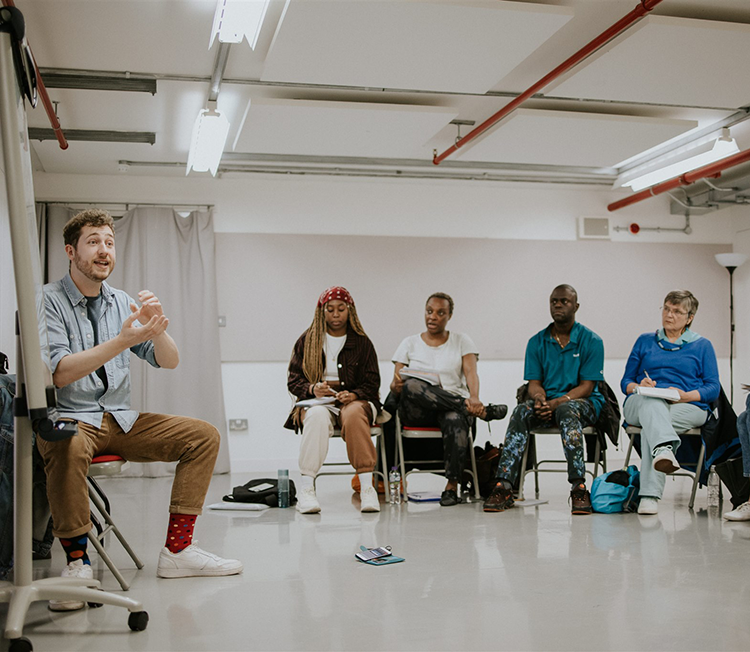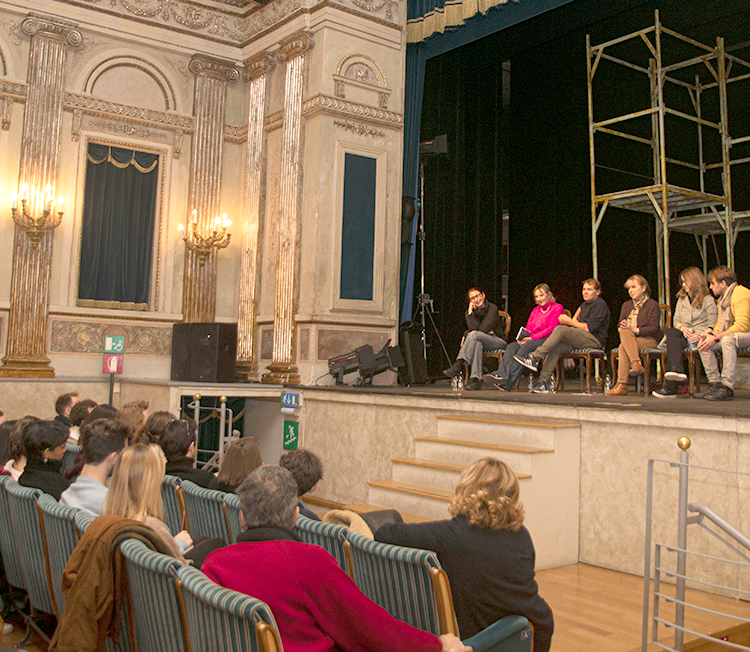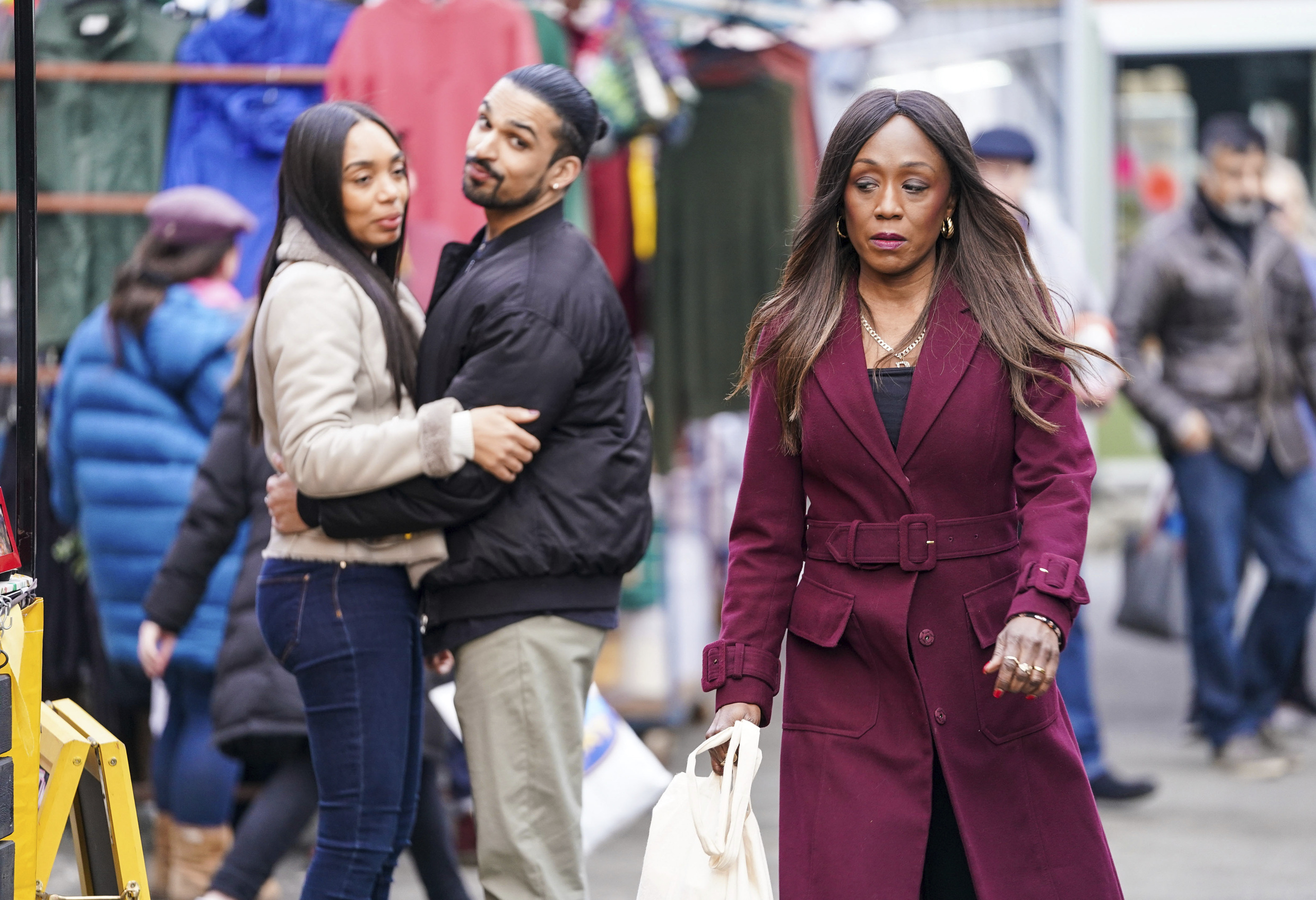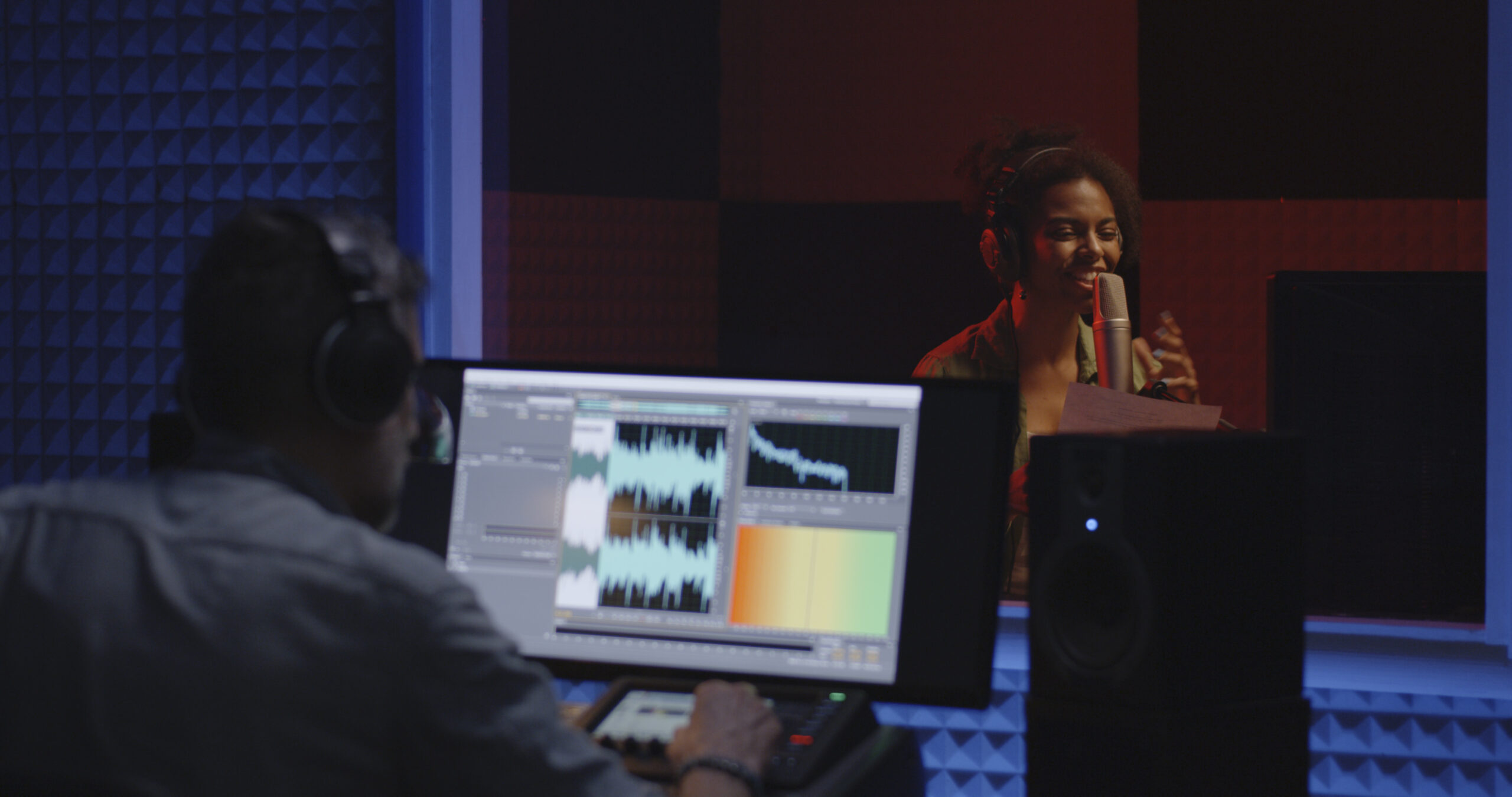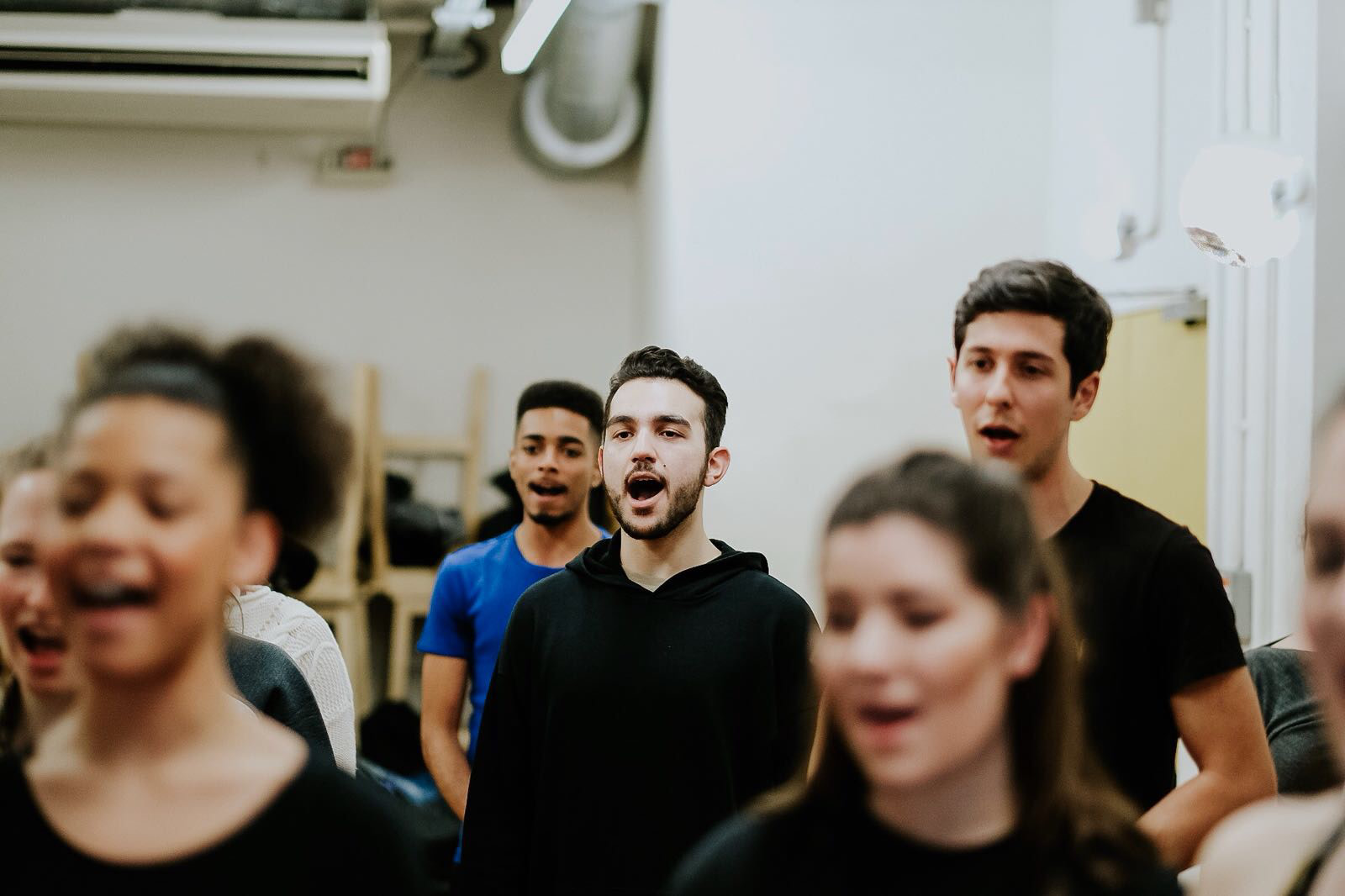Leading acting and voice coach, Mel Churcher, guides us through the process of self-taping, and finding the freedom to act more naturally within it
As well as running workshops and coaching a wide range of professionals for the past 30 years, Mel Churcher has also worked as an actor and broadcaster. Her session at Spotlight’s Open House drew on this experience to give our members an insightful look at the self-taping process – along with advice on overcoming some of the challenges a self-tape can present.
Here are some of Mel’s tips for finding freedom in self-taping:
1. Become a text detective
Read everything in the scenes you’re sent out loud – even all the bits that you’d normally cross out as an actor. For example, read directions like, “She smiles soulfully,” out loud because you’re getting the viewpoint that they’re seeing the scene from.
Read carefully so that you start to find that world, who you are, why you’re mentioning someone, and why this has happened. People sometimes say things like, “But it’s just chit-chat.” Nothing is chit-chat! It wouldn’t be sent to you otherwise.
Look at what is actually happening. Are you attracted to each other? Are you trying to get a job? Are you wondering if they’re the person that scratched your car last night? There’s a reason somewhere – which you’re going to have to find.
There are many times when I’ve worked with someone one-to-one on a self-tape, and I’ll say, “Where are you?” meaning literally, physically. Are you on a beach, are you in a hotel room, are there people around you, are you in a safe place? A lot of people forget about where they are physically. We’re really different when we’re in a restaurant and there’s noise and other people, as opposed to how we are in the front room of our flat.
2. Identify the journey your character is on
There’s a journey somewhere in the different scenes you get sent. If you’ve been sent two or three scenes, what’s different about them?
Has your role grown? Were you innocent in the first one, and now knowledgeable in the last? Were you in love in the first one, and out of love in the last? What’s happening, and how is that changing the role for you through these scenes?
3. Frame the frame well
When doing self-tapes, framing is very important. Your camera needs to be around eye level. If it’s too low or too high, it’s going to look strange. Your eyeline to the real or imaginary person needs to be not too far off the camera. It’s fine for the odd moment if you see someone come in, but if it’s actual dialogue, it needs to be somewhere the viewer can still see your face well.
The only difference is when you’re filming your intro. For this, you should shoot it full-length. You might want to play around, have the camera a bit lower, etc., but for your close-ups, you want your camera around eye level.
4. Prepare with improv
I love improv. If there’s something you mention in the text that happened before, then that’s something you should act out. If you’re talking to a woman and say, “Do you remember that vow that we made that we’d never get married?” ask yourself when you made that vow and what did you do?
Do it now. Imagine her there and make that vow. Now, when you say it, it’s real to you. We can use these little improvs in so many ways.
In the script, your role tells a story of something that happened to them, even if it’s a little one like, “You’ll never guess what happened! When I came back from that supermarket, that man followed me, and then he said…”
If you act it out like a pantomime, when you tell it, you’ve got pictures in your head and you remember that it feels so much more real. If you’re filming a self-tape about breaking up, you can’t break up unless you’ve loved someone – so it’s worth remembering that person two years ago, and how happy you were, how much you loved, what you loved about them, what you said and did. And now, it’s broken and you’re there.
5. Disengage from the technical side of self-taping
With self-tapes, you’re given the responsibility of being crew: a camera person, a lighting person, etc. You’ve got your kit ready; you’ve got your reader arranged, now take some test shots to check that everything’s working correctly.
Then, I’d suggest going into another room, or into the garden, for five minutes. Do a warm-up, then come back into this imaginary world like you would on a set to do a scene. Don’t worry about things like whether the camera angle’s okay – just focus on your work as an actor.
6. Create the ‘other person’ in the scene
It’s so important and can be hard to do but create the other people that you’re interacting with in a scene. Think about who they are and what they’re giving back to you.
If you’re going to do a part in a movie, I would say never think about what’s going to come back to you – just react as it does – but in a self-tape, you have to cast all the people in that world.
You can use people that you know from life, but it depends on the situation. My advice is to choose an actor in your head that you think would be right for that role. Then you’ll need to work out what their reaction to you is when you’re batting with them, so that you can respond to their reaction internally.
7. Think about how you ‘bounce’ off other people
If we are by ourselves, we very rarely speak. We expend an enormous amount of energy to create a thought and turn it into words. It could be a very gentle thing – like welcoming someone or stopping the postman – but the fact that we vocalise our thoughts means we are bouncing off the outside world. That’s hard to do when you’re doing a self-tape on your own.
When self-taping, we’re obviously concerned about doing a scene right, but think about who you’re bouncing off.
8. Think in metaphors
Most of us think in metaphors quite a lot. We know we get manipulated by politicians, advertising agencies, everything, but we can use it to our advantage. In this work we’re doing, we might have to have some deep loss, and I don’t think you need to look at your own loss. Instead, you could use some kind of metaphor, like ‘being punched in the stomach’ or ‘aching with loneliness’. If you find that, then you’re the person that’s happened to, and you don’t have to think about it – it’s there.
9. Believe in the world you’re creating
We have to work quite hard to give ourselves enough pictures, enough details and enough safety, that we can start to believe in this world we’re creating and actually respond to it – and the imaginary people in it freely. All these rules make us terribly tight and tense, if we’re not careful.
I miss a lot of freedom when I watch self-tapes. I miss the feeling that people can, as in life, look away from the other person, gesture, talk about… People can feel quite restricted, and it’s a hidden danger when filming self-tapes.
10. Build the scene
When people play self-tapes on whatever device they’re watching on, you often see the actor jerk into action really fast. When acting on self-tape, you might have a strong scene where you’re yelling at someone, screaming something like, “You mustn’t do that!”
It can be quite disturbing for the people watching your self-tape back, so I would suggest finding a gentle moment before you launch into action.
Suppose your scene is haranguing someone and telling them off. There could be a moment where you look and see, for example, a photograph on the wall, and now look what’s happened, and then go into the text. But don’t look too far away from the camera. What happens then is the casting director sees somebody relaxed.
There’s a moment to come into the scene with you. A moment where you’re in the imaginary world, in the role, and just having that second before the words happen. It helps to take them in with you – rather than you going all out at them.
11. Remember what your self-tape is for
Don’t overdo props as you don’t want to distract the casting director from you. If you have a cup of tea, you don’t want to leave it there, but if you’re setting the scene of being in a café, then you could have a little sip of the tea at the beginning, or when they ask you something that you don’t want to answer. It makes you feel authentic.
Some casting directors like props, and some don’t. Either way, we must remind ourselves what a self-tape is for. What’s actually happening with a self-tape is you are allowing people to see you at work so they can imagine you in the role. It’s about the acting. That’s what you’re doing it for: you want them to cast you.
It’s not about, “Oh, they’ve got really good lighting.” But equally, if they say, “I can’t really hear that. Gosh, it’s hard to see them,” then that’s no use either. You want the self-tape to be good technically, so they can see you, but the purpose of doing it isn’t to showcase your production skills.
In the end, you need to find the freedom, and if a prop that’s mentioned or is right for the scene – like that glass of wine or that notepad you’re supposed to look at – and is used carefully and minimally, it makes you feel safer, as well as setting the scene.
12. Vary your eye contact
We lock eyes with people we’re talking to for very particular reasons: to heal them, to help them, to make sure they’re telling us the right thing. But as soon as we get a new thought, we look away. So, don’t be afraid of that.
Don’t be afraid of using the space. If you’re talking to someone and they ask you a difficult question, maybe you need to look away before you can answer them. That moment makes it feel so much freer; so much more real.
13. Choose the right take
When you send your self-tape, how do you choose which take to send? Give yourself a break, then come back and watch your takes to decide.
Which one interested you the most? Which one surprised you? That might be the one to send. The one where you aren’t suddenly worrying too much about it because you get drawn into the story – that’s the one.
14. Make sure your self-tape is labelled
You really do need to label. If you’re not told what to label your tape, then label it with your name, the role and the project, so the casting directors they can file you correctly.
It’s worth testing out your self-tape by sending it to yourself to check its labelled correctly, as sometimes that can get lost between naming the file on your device and sending via WeTransfer. Even when you’ve labelled it on your phone, send it to your computer and check that it comes in labelled and hasn’t gone back to the default file name. If it has, relabel it on your desktop and send it off again.
You can find more information and advice about self-tapes on our website.
This article was written from notes taken at Mel Churcher’s ‘Finding Freedom within Self-Tapes’ session at Spotlight’s Open House. If you’re a Spotlight member and would like to sign up for future events like this one, check your membership email settings to ensure you’ve opted into receiving our newsletters.
Mel Churcher is an actor, theatre director and voice coach. She has worked with companies like the National Theatre, RSC, Manchester Royal Exchange and Regent’s Park Open Air Theatre, where she was the voice department for 12 years. Now she mainly works with screen actors and runs international screen acting workshops. She’s coached on more than 65 major films and TV series (see imdb.me/melchurcher). Mel’s written three books: Acting for Film: Truth 24 Times a Second (Random House), A Screen Acting Workshop (Nick Hern Books) and The Elemental Actor (Nick Hern Books). She holds MAs in Performing Arts (Mddx) and Voice Studies (RCSSD).
Image credit: g-stockstudio / iStock

